#britannica's tales around the world
Text

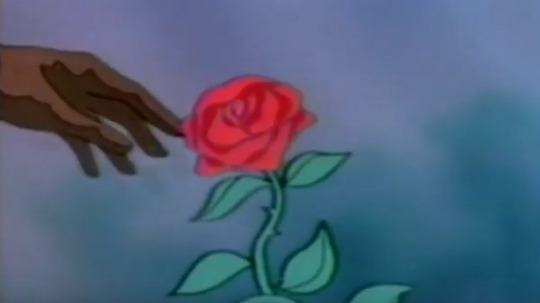






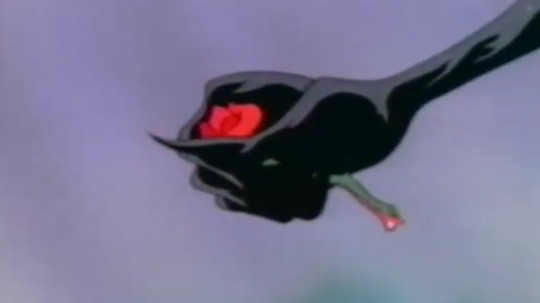
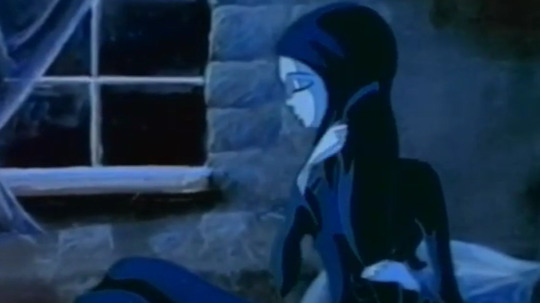



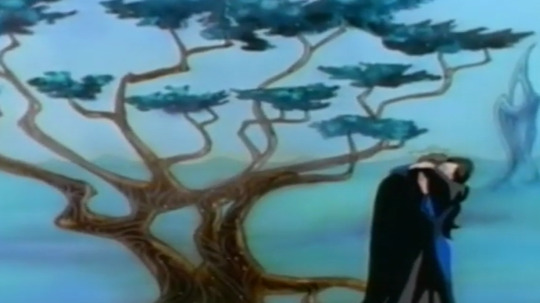
Britannica's Tales Around the World: Beauty and the Beast (1990) directed by David Alexovich
#screencaps#batb#beauty and the beast#animation#britannica's tales around the world#blood#fairytales#fairytale#la belle et la bête#fantasy#gothic#<- ?#american animation#1990s
16 notes
·
View notes
Photo
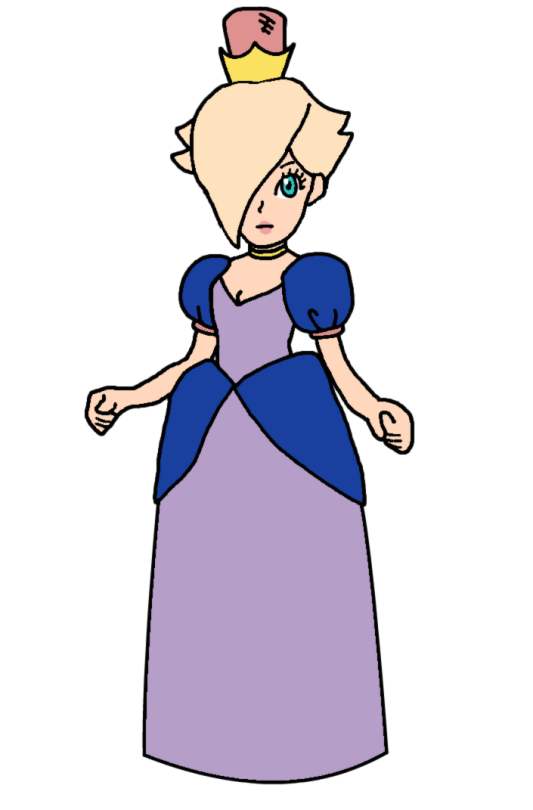
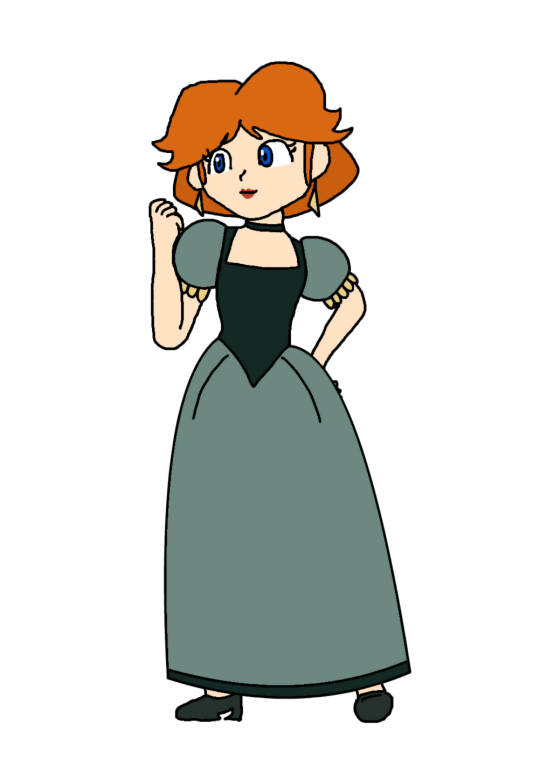

Made in 2021
If you’ve seen this anywhere else, I posted it back on my deviantArt when it was made.
Mario girls cosplaying as characters from Britannica’s Tales Around the World
1. Talia (Sun, Moon and Talia)
2. Francesca (Sun, Moon and Talia)
3. Mysterious Princess (The Woodcutter’s Wealthy Sister)
#britannica's tales around the world#sun moon and talia#the woodcutter's wealthy sister#princess peach#peach#princess daisy#daisy
3 notes
·
View notes
Photo
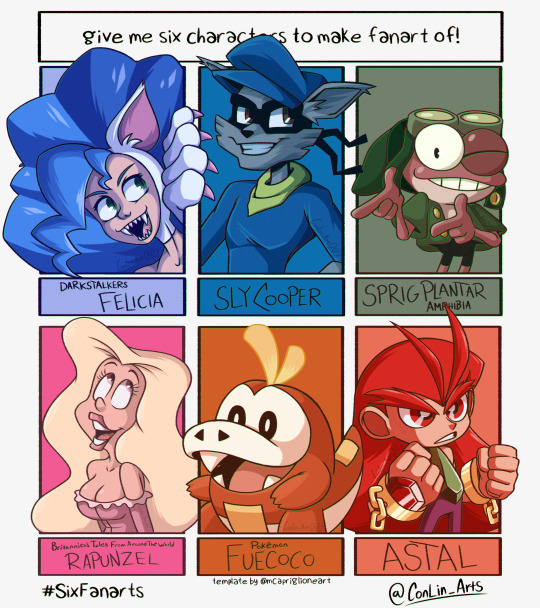
Got Another Six Character Challenge done!
Always fun to do them and trying to figure out how to draw the characters!
#sprig plantar#amphibia#sly cooper#fuecoco#pokemon#astal#felicia#darkstalkers#britannicas tales from around the world rapunzel#conlinarts#sixfanarts
64 notes
·
View notes
Text
Sleeping Beauty Spring: "Britannica's Fairy Tales from Around the World: Sleeping Beauty" (1990 animated short)

Britannica's Fairy Tales from Around the World (sometimes shortened to Britannica's Tales Around the World) is a direct-to-video animated series produced in the early '90s by Encyclopedia Brittanica, Inc. Its aim was to teach children about the different cultural variations of fairy tales. Each installment paired an adaptation of a popular European fairy tale with two other shorts based on similar tales from other countries. Sleeping Beauty was paired with retellings of The Petrified Palace from Bangladesh and Sun, Moon, and Talia from Italy. Because I've chosen only to review Sleeping Beauty adaptations based on Perrault and the Grimms' versions, and because each short can be viewed separately on YouTube, I'll only review the 12-minute short based on Perrault's tale.
This Sleeping Beauty stands out from others because it is indeed based on Perrault; so far, it's the only adaptation I've seen to follow Perrault and continue the story after Sleeping Beauty and the Prince are married. Accordingly, the more familiar first half of the story is covered quickly. It opens at the baby Princess's christening, where seven good fairies – beautiful ladies, each with a different color for her gown and skin – each bestow their gifts. Of course the feast is interrupted by the Evil Fairy, a purple-skinned, red-winged creature who bears a resemblance to Demona from Gargoyles. But the lilac-clad Queen of the Fairies softens her curse from death to sleep and adds that the entire court will sleep with her. Sixteen years later, the Princess is frolicking through the castle with friends, when a new room magically appears inside a tower – in it, of course, is a spinning wheel, and the curse comes to pass. Then, a hundred years later, the Prince is traveling with his mother and rides forth alone to explore the briars surrounding the castle. It doesn't take him long to discover Sleeping Beauty and break the spell.
At this point, the narrator tells us that most people think the Prince and Sleeping Beauty lived happily ever after, but the truth is different. After their marriage, nine years pass, during which the Prince becomes king and Sleeping Beauty gives birth to two children, Dawn and Day. Then, as in Perrault's tale, the young King is forced to go to war, leaving his wife, children, and elderly mother behind. But the rest of the story plays out differently than Perrault's second half. In this version, the King's mother isn't an ogress who tries to eat her grandchildren and daughter-in-law. Instead, the Evil Fairy comes back, now more feral and animalistic than she was a century earlier. With a magic potion, she transforms the King's mother into a "bugaboo" – a large beetle-like insect – and assumes her likeness. Then she gives the potion to a servant, ordering him to transform Sleeping Beauty, Dawn, and Day into bugaboos too. But he hides them instead, transforming two cats and a rat in their place. Before long, however, the Fairy discovers the trick, and she boils a cauldron of bugaboo potion, then tries to hypnotize Beauty and the children to make them step into it. But just in time, the King comes home from the war, and he battles the Fairy long enough for Beauty to snap out of her hypnosis; she then saves her husband by overturning the cauldron, so that it falls on the Fairy, crushing her to death. The rat, the cats, and the King's mother are restored to their true forms, and at last everyone does live happily ever after.
This isn't the highest quality animated short – that I'll admit. The animation has a strange glossy look, and the characters tend to have large, slightly creepy mouths and to stare directly at the viewers in an unnerving way. But the narration and voice acting are generally fine, apart from a few flat line deliveries, and the music, drawn from Tchaikovsky's ballet score, is effective. And I do enjoy finally seeing a Sleeping Beauty adaptation that includes Perrault's second half of the story, even if it is considerably altered.
This isn't an essential Sleeping Beauty by any means, but it's worth seeing at least once.
@ariel-seagull-wings, @thealmightyemprex, @faintingheroine, @reds-revenge, @comma-after-dearest, @paexgo-rosa, @themousefromfantasyland, @the-blue-fairie
#sleeping beauty spring#sleeping beauty#fairy tale#britannica's fairy tales from around the world#animated series#animated short#1990
11 notes
·
View notes
Text

Website: https://camerabazar.net/
Address: 4834 Southern Street, Roslyn, NY 11576
Today’s Britannica is a dynamic, continuously updated, rigorously fact-checked information source for students, teachers, and lifelong learners. Whether you need historical context for the latest evolving world crisis, want an engaging biography of someone in the news, or just would like to test your knowledge of world capitals, Britannica is the only place you need to look.
Facebook: https://www.facebook.com/Britannica/
Twitter: https://twitter.com/britannica
Pinterest: https://www.pinterest.com/britannica/
Keywords:
britannica
britannica restorations
britannica political
britannica shipwreck
britannica encyclopedia
britannica's tales from around the world
britannica song
britannica afghanistan
britannica movie
britannic sinking
britannia ship
britannica dive
britannic wreck
britannica politica afghanistan
hoi4 pax britannica japan
pax britannica ost
britannica encyclopedia book
hoi4 pax britannica 2nd continental army
pax britannica japan
pax britannica nova
britannica all new kids' encyclopedia
encyclopedia britannica 15th edition
pax britannica hoi4
hoi4 pax britannica ost
encyclopedia britannica 2010
encyclopedia britannica 9/11
pax britannica germany
encyclopedia britannica kya hai
encyclopedia britannica 11th edition
pax britannica nova glory
encyclopedia britannica 2023
britannica school
britannica new russia
britannica russia
britannica documentary
encyclopedia britannica 1768
britannica concise encyclopedia
tommykay pax britannica hoi4
britannica miles
britannica 007
britannica 70s
britannica 80s
britannica glow
britannica quiz
britannica xray
99641 britannica
britannica history
britannica youtube
britannica cinderella
zatonięcie britannica
pax britannica lore
britannica political russia
britannica 4k
britannica tales from around the world
britannica kya hai
britannica 5th grade
pax britannica new plague
britannica lord miles
britannica beauty and the beast
britannica international school shanghai
britannica vs wikipedia
britannica 60 minutes
britannica fairy tales from around the world
britannica commercial
britannica music
old britannica
encyclopedia britannica game
britannic underwater
britannica bird
britannica edits
britannica greece
britannica london
britannica taliban
britannica videos
britannica halloween
britannica rapunzel
britannica yearbook
britannica pronunciation
britannica international school
encyclopedia of britannica
britannica xr
britannica full movie
pax britannica hoi4 lore
britannica all new kids' encyclopedia what we know and what we don't
pax britannica music
britannica 4th grade
britannica 8th grade
britannica discovery library
pax britannica napoleon
britannica 50th anniversary
britannica 60th anniversary
britannic wreck dive
encyclopedia britannica vs wikipedia
pax britannica giant swan
pax britannica orbit wars
britannica restorations 300tdi
britannic whistle
britannica boat
britannica titanic
britannica malayalam
victoria britannica
britannica drawing
britannica luhansk
britannica academic
britannica education
britannica uk
britannica xp
britannica political afghanistan
britannica encyclopedia review
britannic sleeping sun
britannic underwater footage
hoi4 pax britannica victoria
britannica north korea
britannica international school budapest
pax britannica mexico
britannica books
britannica footage
britannic shipwreck
britannica anthem
britannica tourism
britannica 288
britannica xmen
dark britannica
britannica callum
britannica phelous
britannica ukraine
britannica evolution
britannica interview
katastrofa britannica
pax britannica hoi4 super event
mg britannica
pax britannica original soundtrack
britannica children's encyclopedia
britannica encyclopedia download for pc
britannic wreck 2023
britannica ready reference
britannica first big book of why
encyclopedia britannica in hindi
britannic wreckage
britannica ansiklopedisi
britannica restorations td5
britannica band
britannica channel
britannica premium
victorious britannica napoleon
britannic sinking animation
britannica restorations land rover
britannica illustrated science library
britannic song
britannic urdu
britannia trailer
britannic footage
pax britannica documentary
britannica english
pax britannica game
pax britannica hoi4 music
pax britannica livewire
britannica restorations swivel
britannica adele
lounge britannica
britannica pendrive
britannic wreck 2022
pax britannica main theme
accademia britannica new york
britannica the dinner party
encyclopedia britannica online
britannica hansel and gretel
britannic ship
what is britannica encyclopedia
#britannica#britannica political#britannica restorations#britannica shipwreck#britannica encyclopedia#britannica's tales from around the world#britannica song#britannica afghanistan#britannica movie#britannic sinking#britannia ship#britannica dive#britannic wreck#britannica politica afghanistan#hoi4 pax britannica japan#pax britannica ost#britannica encyclopedia book#hoi4 pax britannica 2nd continental army#pax britannica japan#pax britannica nova#britannica all new kids' encyclopedia#encyclopedia britannica 15th edition#pax britannica hoi4#hoi4 pax britannica ost#encyclopedia britannica 2010#encyclopedia britannica 9/11#pax britannica germany#encyclopedia britannica kya hai#encyclopedia britannica 11th edition#pax britannica nova glory
0 notes
Text

Beauty and the Beast, from "Britannica's Tales Around the World." Does anybody remember that show?
42 notes
·
View notes
Text
The Year of the Flood - 1993
I am in the flood, and the flood is in me.
In the year of 1993, the mighty Mississippi River flooded its banks and spread out over 30,000 square miles. It was one of the greatest deluges in its history, second only to the great flood of 1927. By October of 1993, the flood waters finally started to recede—and that was the month and year that I was born.
My mother and father were fishing on the Mississippi River near Louisiana, Missouri during the height of the Flood of ‘93. Of course, this means that my mother was pregnant with me at that time. Before I was even born, I was being gently rocked by flood waters while my parents fished off their old John boat. They camped along the flooded banks in a cramped camper for a week during that summer. Perhaps, then, it is no wonder that I am drawn to the high, muddy water and the sound of the rain. The flood is in my blood.
The river is in my father, and in those that came before him.
The river is in my father's blood, too. He was taken to the Mississippi River at a young age and fell in love with the water and wildlife, and in turn he instilled that in me. Many a summer day was spent boating on the Mississippi, until one day Dad decided that he was tired of the 45-minute drive to get there. He started searching for a small house— “a river shack,” he said—to purchase so we could spend multiple days out on the river without having to camp. Instead, he found a 2600 square foot ranch-style home at an unbeatable price with an incredible view; the closest house to the river in that neighborhood. The nearest boat ramp is a two-minute drive away. A conservation beach along the water stretches almost a half a mile, containing 11 acres, just behind the home. The location was perfect. That home became our River House. I was 12 years' old at the time.
We owned that house during the 2008 flood, which nearly rivaled the Flood of '93. The river came up into our yard, about four feet away from our back porch, and twelve feet away from the house itself. You couldn't get much closer to the river than that. We were able to fish right out of our back yard. Where we lived, the 2008 flood lasted for weeks. At one point, we were worried enough to sandbag around the porch to prevent any damage to it (but it didn't get that far). In 2019, another flood rose just slightly higher than the 2008 flood, but it only lasted a few days.
When I started college, I moved into the River House full time and have been living there ever since. Every day my eyes lay upon the flowing water. It is changing all of the time. For a moment it can be smooth like glass, and the next it is dark and turbulent. There are several places where the current regularly runs backwards along eddies and islands. Floods are common. They don't get all the way up to the yard very often, but over the past decade there hasn't been a year where the river stayed inside it's normal banks all summer. High water records seem meant to be broken. The deluges have become normal now.
A story old as time--great destruction, and great inspiration
Most cultures around the world tell a story of a giant flood that threatened the whole world – The Deluge itself that the Bible's Noah's Ark was built to escape. Even the oldest recorded written story that we have discovered, The Epic of Gilgamesh, has such a tale within it. A flood can damage the land, homes, and people when its banks run over. According to the Britannica, the 1927 Mississippi River flood killed approximately 250 people and further displaced 750,000. However, it also inspired songs, like "The Levee Breaks" by Joe McCoy and Memphis Minnie (later covered by Led Zeppelin), as well as "Louisiana 1927" by Randy Newman. The rolling waters are both dangerous and inspiring, capable of both tremendous strength and calm beauty.
They also served as the inspiration for In the Deluge. Like the mighty Mississippi, sometimes emotions can overwhelm us, drown us, and overflow out of us. Sometimes our levees break that we built up to contain them. Our emotions can whisk us away like a river, drag us down like sea serpent, and spin us around like a whirlpool. However, there also is calm, peace, and growth to be gotten from the rain. Life flourishes where there is water. We cannot live without it.
When I first conceived the theme of this poetry collection, I called it "Drowning in the Deluge". Alliteration is my jam, and I'm fascinated by the archaic word "deluge". However, as time passed, I realized: just because you're in the midst of a flood, doesn't mean you have to be drowning. I simply changed the title to "In the Deluge". It's a subtle shift, but an important one. Whether we ended up here by choice or by force, we are here, in the flood. We might even be underwater, but we are not drowning. It is a lot of water, but we are weathering it. Maybe there are days where it feels like drowning, but maybe other days we're trying to dive deeper. Some days we are floating adrift. Sometimes we're at the bottom where it's so dark we can't see, and sometimes we're so close to the surface we can breach it. We are always in it, and maybe it's even in us.
Come hell or high water, we will weather it.
-Dana Lockhart
#flood#deluge#poetry#my writing#1993#sliceoflife#blogger#mississippi river#in the deluge#behind the scenes#summer of 1993#weather the storm#let it rain#flood waters
2 notes
·
View notes
Text
i am once again thinking about the hilichurl rogue :(
the first time i fought it was actually yesterday after climbing a mountain in fontaine cause i wanted to see what it was and the drops really reminded me of neanderthal flower burials + how both neanderthals and hilichurls are/have been seen as primitive beings despite tons of evidence to the contrary (ignoring what we know about khaenri'ah since the curse of the wild seems to cause them to be catatonic for a period of time).
theres tons of literature on how neanderthals actually appear to be similar to homo sapiens and have higher mental functioning as evidenced through their tools, their presumed social structures (taking care of injured/disabled neanderthals rather than abandoning them as would be thought of beings focused only on survival), but most notably for this the evidence of "flower burials" at Shanidar.
Basically, two neanderthals were found buried in primarily medicinal flowers (indicating their possible role in their group). I believe there were 11(?) other neanderthals found there who appeared to have been crushed by rockfall whos ages (if my memory is correct) were from around 7 to mid 40s. The reason i bring this up is because of one of the flowers found at Shanidar: Achillea/Yarrows. I find these flowers to be fairly similar in appearance of the petals (excluding size) to the hilichurl rogues drops

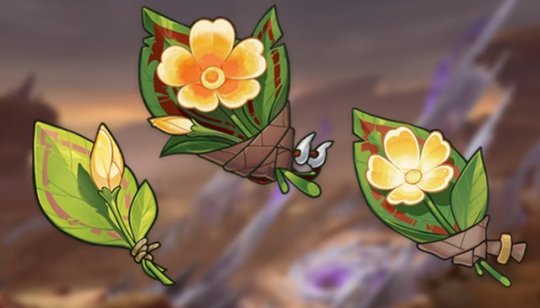
Now, each drops description:
A Flower Yet to Bloom
"a wildflower that a hilichurl rogue treasured. it was plucked before it could bloom. the hilichurl takes nothing with it in its sojourn across the wilderness save this flower."
Treasured Flower
"a wild flower that a hilichurl picked bereft of any special qualities. flowers can be used as gifts or offerings to express ones feelings in many cultures"
for this description in specific i would actually like to quote Ralph S Solecki's "The Implications of the Shanidar Cave Neanderthal Flower Burial"
"Under normal circumstances, today, in many cultures, flowers and death go together, as one can see a funeral corteges and burials. The association of flowers as tokens of esteem, respect, or for the joy of looking at [...]. According to the Encyclopaedia Britannica, 'the flower has been a universal symbol of beauty in the civilizations of the world. Confucius included its cultivation among the arts that were essential to a man of culture.' We pride ourselves thinking that we know a lot about Neanderthal man, but the association of flowers with Neanderthals adds a whole new dimension to our knowledge of him, and his humanistic nature."
Wanderer's Blooming Flower
"a blooming wild flower that a hilichurl rogue treasured, bereft of any special qualities. the eternal outlander asks not for reward, but only to see their deeds come to fruition"
TLDR (abstract lol); hilichurl rogue drops remind me of the neanderthal flower burials found at shanidar
below the cutoff are some sources if you want to do further reading on neanderthals
(im not an anthropologist or even studying it btw but here are some articles on neanderthals i used for a bibliography on neanderthal spirituality in an anth class last winter in case you want to read up on it, theyre formatted in SAA kinda)
Appenzeller, Tim
2013 Neanderthal Culture: Old Masters. Nature 497:302-304.
Hochadel, Oliver
2020 The Flower People of Shanidar: Telling a New Tale of Neanderthal Brothers. In
Narratives and Comparisons, edited by Martin Carrier, Rebecca Mertens, and Carsen Reinhardt, pp. 99-122. Bielefeld University Press, Bielefeld. https://doi.org/10.14361/9783839454152-005
Mitchell, Mary Shirley
2021 Geoarchaeological Methods and the Intentionality of Neanderthal Burial. Furthering
Perspectives 11:29-41. https://mountainscholar.org/bitstream/handle/10217/233626/JOUF_FurtheringPerspectives_vol10.pdf?sequence=1#page=29
Morris-Kay, Gillian M.
2010 The Evolution of Human Artistic Creativity. Journal of Anatomy 216:158-176.
Pomeroy, Emma, Paul Bennett, Chris O. Hunt, Tim Reynolds, Lucy Farr, and Marine Frouin
2020 New Neanderthal Remains Associated with the ‘Flower Burial’ at Shanidar
Cave. Antiquity 94:11-26. http://dx.doi.org/10.15184/aqy.2019.207
#the flowers and earth blackened where he died (i set him on fire)#hilichurl rogue#omg its a popular tag??#you guys get me#genshin impact#im pretty sure neanderthals are also typically quite a bit shorter than homo sapiens but i didnt add it cause im not 100% sure#also sorry for not checking too many details on shanidar but i linked some articles#theyre formated in SAA btw hope thats okay#I AM NOT AN ANTHROPOLOGIST or even studying it btw#neanderthal#i love anthropology so bad tho like its soooo fun to study#kms if you want me to get to digging like i could never do what you guys do much respect#also! as far as i can tell many neanderthal groups seemed to wander?#at least thats my interpretation but once again im not totally sure so i didnt add it#just food for though especially with the last drop description about the eternal outlander#i guess hilichurl rogues dont even fit in among reg hilichurls also and they seem to be build at more of an in between of reg characters#if i had more energy id get going about that child who appeared mixed between homo sapien and neanderthal
6 notes
·
View notes
Text

Good Omens S2E2 'Book club' (Xray trivia says Douglas and Neil would love the viewers to read these books) - do they signal where the story of S3 is going?
All themes/plot summaries are taken from google (and are not my own interpretations), so may not be totally accurate however are here as food for thought.
From L>R
I Capture the Castle - Dodie Smith
Set in WW2, story is told through the journals of the narrator. Coming-of-age story.
Themes: love, poverty, propriety.
No woman, No cry - Rita Marley
Biography of Bob Marley's by his partner Rita.
Themes: centres around the relationship between Bob and Rita. No woman no cry is often used to promote encouragement and recognise that life is worth living.
The Crow Road - Iain Banks
Mystery novel, 'Crow Road' is Scottish expression for death/afterlife.
Themes: death, faith, morality, discovery (self/family).
The Curious Incident of the Dog in the Night-Time - Mark Haddow
Murder mystery, protagonist has ASD and finds people confusing.
Themes: family, honesty, bravery.
Catch-22 - Joseph Heller
Set in WW2, American bombardier stranded on island and follows his attempts to survive.
Themes: individual vs society, moral crisis (self interest vs altruism), morality, justice, personal integrity.
Love in a Time of Cholera - Gabriel García Márquez
Tale of 2 lovers who reunite after a lifetime apart. Follows the secret relationship - father of one person forces them to stop seeing the other.
Themes: parallels between 'lovesick' and literal illness, love, morality, social norms vs personal fulfillment, perseverence/endurace.
*I can't see the next book title!*
Nineteen Eighty Four - George Orwell
Dystopian fiction, protagonist is frustrated at the omnipresent 'eyes'/oppression of the ruling party. Protagonist keeps a diary and embarks on a forbidden relationship.
Themes: totalitarianism, identitiy, reality, censorship, freedom.
The Big Sleep - Raymond Chandler
Story of a private investigator (PI) hired to investigate the incidents of blackmail against the clients daughter (by a bookseller). PI finds they have been pulled into a bigger story than initially anticipated.
Themes: corruption, death as an escape, morality.
The Bible
Does this need a summary?
The Great Gatsby - F. Scott Fitzgerald
Story told by narrator in a series of flashbacks. Tells story of a millionaire and his pursuit of the woman he loves.
Themes: tradgedy, corruption, greed, love.
Catcher in the Rye - J.D. Salinger
Covers the expulsion of protagonist from his school and his search for truth in what he perceives as a 'phony' world. Told via flashback/through memory.
Themes: innocence, death, resistence of maturation/growing up.
A Series of Unfortunate Events - Lemony Snicket (pseudonym)
Three siblings are rescued from a tradgedy befalling their family and live with a relative who conspires for their fortune.
Themes: greed, grief, lonliness, found family, morality.
Herzog - Saul Bellow
Told (in large part) through letters written by the protagonist.
Themes: ambiguity, personal journey, religion, death, love. There is a mention somewhere of it being linked to the concept of everything returning to the earth.
Go read the books suggested here to find out more and how these might relate to GO S3!
(These themes were taken from various sites including cliffnotes, sparknotes, wikipedia, britannica, shmoop, bookbrowse etc).
#good omens s2#goodomens#goodomensbookclub#good omens 2 spoilers#good omens theories#good omens speculation#good omens analysis
5 notes
·
View notes
Note
Talking about fairy tales reminded me about a series I learned by Encyclopedia Britannica for VHS. It was called Britannica's Tales Around the World which was hosted by the late Pat Morita. Where they look at a classic fairy tale and then at either at similar tales from other parts of the world. Some which aren't really talked about much. I learned about the vhs from a video of someone reviewing them. I would recommend checking it out its very interesting.
oh, that's neat. I'd have to check it out later.
I like fun little edutainment stuff esp if it's oldish.
7 notes
·
View notes
Text
Can Fiction Change the World?
I was recently asked the question of whether or not I believe that fictional writing can change the world. As a voracious consumer of fiction for the majority of my life, I did not hesitate to answer in the affirmative. Of course fictional writing can change the world. It took me a bit longer to answer the follow up question: “How?” I started thinking about the great titans of fiction writing. The academic elite will cite writers like Shakespeare, Dostoevsky, Tolstoy, and Faulkner, but I think about fictional stories I read in my youth and young adult years – both for school and for pleasure. These included To Kill a Mockingbird by Harper Lee, The Giver by Lois Lowry, and The Handmaid’s Tale by Margaret Atwood. Today’s post won’t touch on any of these stories, though I could write much about them. Instead, I will focus on authors Toni Morrison and Ursula Le Guin.
It is undeniable that these two women are titans in (and beyond) their field. Morrison authored more than a dozen novels. Britannica cites her as being notable for her examination of the experiences of Black Americans and her exploration of unjust society, as well as her “use of fantasy… sinuous poetic style, and… rich interweaving of the mythic.” Le Guin, like author Morrison, was renowned for her work. She was also prolific – having written more than 100 novels and short stories throughout her career. According to the New York Times, Le Guin was well-known for bringing “literary depth and a tough-minded feminist sensibility” to her works. They noted that she believed her writing could be a “moral force” which helps individuals imagine the outcomes resulting from their actions.
Just because Morrison and Le Guin’s writings are works of fiction, this doesn’t mean they can’t change the world. I would argue that fictional writing changes the world by allowing us to examine what is happening around us now, connecting us to what has happened in the past, and allowing us to reimagine what might happen in the future. It can warn of dystopian futures and can challenge social norms which are problematic or unjust. Fictional works also often contain political commentary. While some might see fictional writing as nothing more than a way to escape our lives for an hour or two, I see it as a broad genre that can cause us to critically reflect upon society and our own humanity.
Le Guin’s “The Ones Who Walk Away From Omelas” certainly does this. In this short story, she describes an idyllic society where everyone is happy. Nothing exists that may cause strife – be it kings or swords, police or bombs. On the surface, everything about Omelas is perfect. Then her story shifts. There’s one thing everyone, from their adolescent years on, knows but does not openly speak of. There is a child, locked in a basement closet, naked and covered in sores, who is only fed half a bowl of cornmeal and grease each day. Everyone knows that their society will fall if the child’s suffering stops. The majority of the people accept this – this child must suffer for everyone else to be happy and prosper – but some young people struggle to accept this. Le Guin describes their disgust, anger, outrage, and impotence in this situation. “They would like to do something for the child. But there is nothing they can do.” So, what do people do when they cannot continue living with this reality? They walk. Le Guin says they go into the darkness, never coming back. They leave behind the happiness and prosperity and beauty of Omelas, having no idea what awaits them. She closes her story however, saying, “... they seem to know where they are going, the ones who walk away from Omelas.” There is certainly plenty of commentary here on systems of oppression and hierarchies. I will dig more deeply into this in a moment. Before I do, I want to give a brief summary of a short story by Toni Morrison.
In Morrison’s “Recitatif,” she follows two girls – Twyla and Roberta – who room together for a brief period of time at St. Benny’s, a church-run shelter for children. As in life, there is a hierarchy, or pecking order, at the shelter. Twyla shares how the older girls cruelly picked on and brutalized them and how looked down upon they were by the “real orphans.” Twyla’s mother danced at night and could not care for her while Roberta’s mother was sick for a time, unable to provide her child with adequate care. Twyla expressed her embarrassment when her mother came to visit, with her unpolished manner, shoddy clothing, and lack of maternal instincts. Roberta, in their childhood, never judged her for this like others did. It is part of the reason they grew so close when they roomed together, but this changed as they got older. When Twyla was poor and working at a diner, Roberta laughed at and was dismissive of her, but when she was married and had a higher income family 12 years later, Roberta ecstatically greeted her and invited her out for coffee. Twyla struggled to make sense of the two interactions. When she asked Roberta why she had been so cold to her that day in the diner, Roberta replied, “Oh, Twyla, you know how it was in those days: black-white. You know how everything was.” Twyla didn’t know, and it became clear as they interacted more that Roberta’s perspective as a white woman of means did not align with hers as a Black woman who had grown up with less-than.
These two stories explore hierarchy and oppression in slightly different ways. Le Guin creates an unrelatable idyllic world which includes familiar notes of oppression and abuse that we see in our world today. The idea of putting the good of the many ahead of the one is a common one. I think about our carceral system where there are occasionally folks who get imprisoned for decades-long (or even life-long) sentences and are eventually found to be innocent of the crimes they were convicted of. Our priority to make the world “safer” by putting criminals behind bars – knowing that our judicial system is flawed and that it sometimes convicts innocent people – is justified by a system that says it is better to harm some innocent people than to leave criminals on the street. Oppress some so that others can have better lives. In Morrison’s story, Twyla, who primarily lived on the lower rungs of the hierarchical ladder, earns worse treatment than Roberta, who – by the nature of the color of her skin, her background, and her means – ranked higher. In the story, increased status and privilege grants one the right to oppress and mistreat others who are lower on the hierarchical ladder. Both of these stories are fiction, but there are elements within them that are very reflective of the real-world.
If I had to pick which author most effectively engaged me, I would pick Le Guin. This may be, at least in part, due to the discomfort I experienced in reading Morrison’s story; it hits close to home. I grew up in a town directly adjacent to one of the worst places to live in America if you are a Black person. Racial injustice is still pervasive there, and I spent my formative years being wholly unaware of this. It wasn’t until I went off to college that I learned about my implicit biases and how I, like Roberta, was perpetuating white supremacy without realizing it. Something that is often said in anti-racist work is that we are not born racist. Racist ideologies are taught – sometimes directly, sometimes indirectly. I am still actively hunting for unconscious biases and prejudices that linger in the back of my mind and working to do better when interacting with others who society would deem as below me on the hierarchical ladder. Le Guin, however, packaged the lesson in my favorite format – fantasy. Omelas is clearly a fictional place. It looks nothing like any place that exists on earth. It reminded me a lot of The Giver, actually, in that it explored a very real, very problematic issue in the relatively safe confines of a fictional story. For all intents and purposes, I can take the lessons from Omelas without having to worry that I will ever live there. In Morrison’s story, there is a very real possibility that I could be, or even have been, like Roberta. It is likely I will never know exactly how much harm I did to others when I was a less informed person. But, reading both of these fictional stories caused me to pause and consider the real-world issues they touched on. That, in my mind, is the first step to creating change in the world.
11 notes
·
View notes
Photo


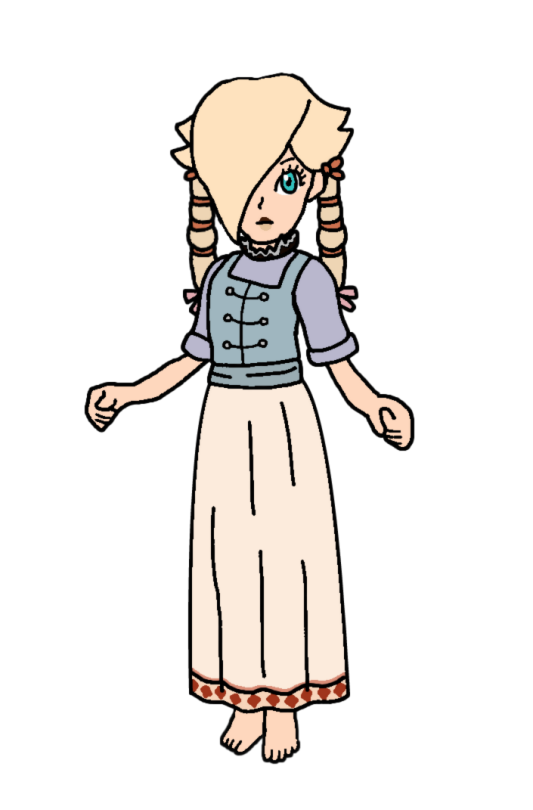







Made in 2021
If you’ve seen this anywhere else, I posted it back on my deviantArt when it was made.
Mario girls cosplaying as characters from Britannica’s Tales Around the World
1 + 2. Rapunzel
3 + 4. Fenchelchen
5 + 6. Maria (Maria Cinderella)
7 + 8. Maiden (The Maiden, The Frog and the Chief’s Son)
9 + 10. Princess Kaziah (The Princess in the Tower)
#britannica's tales around the world#rapunzel#fenchelchen#maria cinderella#the maiden the frog and the chief's son#the princess in the tower#princess kaziah#princess peach#peach#princess daisy#daisy#rosalina
3 notes
·
View notes
Text
Britannica

Website: https://www.britannica.com/
Address: 4834 Southern Street, Roslyn, NY 11576
Today’s Britannica is a dynamic, continuously updated, rigorously fact-checked information source for students, teachers, and lifelong learners. Whether you need historical context for the latest evolving world crisis, want an engaging biography of someone in the news, or just would like to test your knowledge of world capitals, Britannica is the only place you need to look.
Facebook: https://www.facebook.com/Britannica/
Twitter: https://twitter.com/britannica
Pinterest: https://www.pinterest.com/britannica/
Keywords:
britannica
britannica restorations
britannica political
britannica shipwreck
britannica encyclopedia
britannica's tales from around the world
1 note
·
View note
Text
Coming up next in Sleeping Beauty Spring:
This animated short from Brittanica's Fairy Tales from Around the World – the first adaptation I've found to include a variation on Perrault's second half of the story.
youtube
#sleeping beauty#fairy tale#britannica's fairy tales from around the world#1990#animated short#Youtube
3 notes
·
View notes
Text
A Brief History of Messianic Movements

Michael Das.
Independent Researcher, Washington DC.
Abstract.
Jesus Christ wasn’t the first Messiah. The earliest civilized culture on earth, the Babylonians believed the god Marduk would send a Messiah King to their city, the Jews started believing in a Wasp of God during the Roman occupation, they still believe in Mashiach, a mass movement meant to dislodge mankind from an embedded state of ignorance and spur it to spontaneous enlightenment. Hindus believe Krishna will return, Buddhists call Him Maitreya, many around the world still await the return of Jesus. There are specific requirements for a Messiah, some all cultures share, some are unique. One is the belief the Messiah will bring salvation from corruption and disorder. This paper argues which Messianic faith has the most potential to address burgeoning social diseases and heal the world most effectively.
Introduction. What is a Messiah?
The word Messiah is derived from messah, alligator fat used during ancient Egyptian religious rituals, Warwick (2014): "Anointed One" Others call him the Messiah or messeh from the Egyptian word to "anoint with crocodile fat".
Before the term Messiah came to be exclusively associated with Jesus, it was generally and liberally applied to anyone thought to be a prophet. I don’t want to focus on what we already know about Jesus, but to look at how other cultures used this word and whom they thought would perform His duties.
Jews and Egyptians populated the world together long before most others, circa 3500 BCE and obviously the idea of an anointed one stuck with the one long after the other died out. The Mesopotamians had another called Marduk, the Sun-Calf.
Neujahr, 2014 compresses it all together, stating we pin our hopes on a Messiah “…to advocate the future coming of a native dynast who will expel foreign rulers and institute an age of peace and plenty.”
Only one, Judaism says we have to do it ourselves, here and now. The others do make for the telling of incredible tall tales, however.
2. Marduk, the Future King of Babylon.
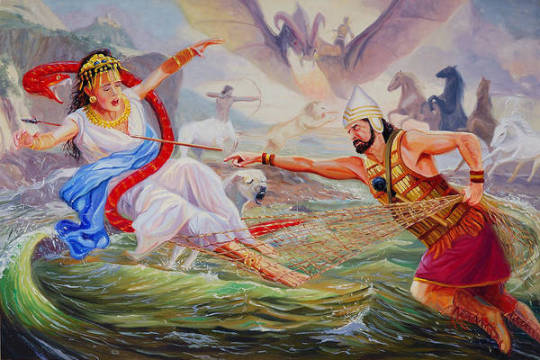
An important religious artifact, a statue of the god Marduk, was stolen and “mad dogs roam the city biting citizens, friend attacks friend, the rich beg from the poor, brother eats brother, and corpses block the city gate,” Neujahr.
Marduk, in response to the calamity, says a new monarch will bring the statue back into the City and all goodness will return with them:
“A king of Babylon will arise and he will renew the house of announcement,10 the Ekursagil. He will draw the plans of Heaven and Earth in the Ekursagil. He will change its height. He will establish tax exemptions for my city, Babylon. He will lead me and bring me into my city, Babylon, and the Ekursagil forever.”
History does not recall whether or not the king showed.
3. The Kalki Avatara of India.
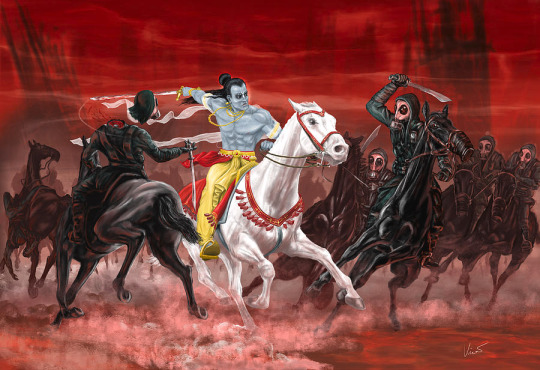
The Bible says Jesus rides back into our lives for a second time on a white horse, “Then I saw heaven opened, and behold, a white horse! The one sitting on it is called Faithful and True, and in righteousness he judges and makes war” -Revelation 19:11.
This is not dissimilar to the projections for what is called the Kalki, “The Most Brutal” of Vishnu, the Reformer God: “He will be seated on a white horse with a naked sword in his hand, blazing like a comet”, Britannica, n.d.
Circumstances that will bring this most heavy-handed of godheads out of the Realm of Vishnu to the earth include a humanity that has abandoned duty, surrendered itself to the whims of the wicked and unjust, and permitted miscreants to rule the world.
The Kalkin appears in many places in Indian lore:
The Padma Purana states in 6.71.279-282 this will take place when the tenth version of Lord Vishnu appears:
“The tenth incarnation known as Lord Kalki will be the supreme chastiser of the envious and irreligious and will kill by the thousands such people so as to make way for the devotees to set up a society centered around God.”
This same theme is echoed in the Srimad Bhagavatam:
“Thereafter…, the Lord of the creation will take His birth as the Kalki incarnation and become the son of Viṣṇu Yaśā. At this time almost all the rulers of the earth will have degenerated into plunderers.”
While it might be wishful thinking to hope God would do in the thousands of scum that deserve what’s coming to them, the Buddhists say only the Friendliest, Maitreya Buddha will do.
4. Maitreya, The Future Buddha.

In Messianic terms, Jesus has two lives, Krishna has 10, Buddha has 5, FPMT, (2022):
In the future, because of the growth of delusion, the beings in this world will degenerate – their lifespan will decrease and their lives will be filled with much suffering. When human life expectancy has decreased to only ten years, Maitreya will manifest in the form of a great spiritual leader and demonstrate the path of virtue. In particular, he will spread the teachings on loving kindness and, as a result, the fortune of the humans in this world will begin to improve – they will gradually give up their deluded attitudes and harmful behavior and their lifespan will start to increase.
Maitreya is said to begin His duty to enlighten and dimly burning human community as a pilgrim Himself, a kind of saint called a Bodhisattva.
Bodhisattvas are enlightened beings who postpone their own salvation in order to help all sentient beings. The bodhisattva is an ideal type, not a depiction of an historical person like the Buddha. Bodhisattvas have some of the characteristics of Christian saints. They are compassionate figures who help worshipers. Unlike saints, however, they are not associated with historical persons, hagiographies, or martyrdom.
4. The Yazidi and the Magi.
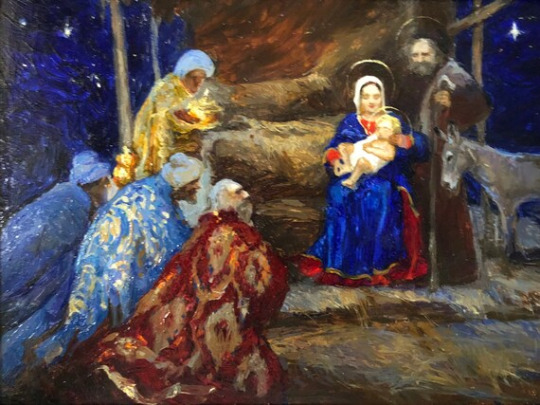
The Yezidi, a Middle Eastern faith that conjoins aspects of Hinduism and Islam, trace the origins of their religion through the Magi, the very same that foresaw the coming of Christ Messiah. They believe the Prophet Daniel, the First Magus was an ancestor, prepared the Magi of the future to recognize and find the Star of Bethlehem and find the Christ Child. Sim.ca (2019)
Yazidis also believe Jesus/Isa brought spiritual light, and just like Muslims was also going to bring Salvation to the world, predict a future with a monarch who will rule with the approval of the gods, reverse a situation of foreign domination, restore the proper functioning of the native cult, and institute a period of prosperity, and with his imminent arrival, a legitimate native dynast to set all the social and natural disorder aright...
The Yezidi, “Angel Protectors” aren’t the only ones that have a problem with “social and natural disorder” nor were they the first. The Jews had an allergy to it from the beginning.
5. Mashiach: The Twilight of Ignorance.

The Jewish notion of a Messiah or Mashiach is defined as a “A priest king” who will, as Isaiah said, situate himself and the following will take place, mfa.gov.il (n.d.):
The wolf also shall dwell with the lamb, and the leopard shall lie down with the kid; and the calf and the young lion and the fatling together; and a little child shall lead them. And the cow and the bear shall feed; their young ones shall lie down together; and the lion shall eat straw like the ox. And the suckling child shall play on the hole of the asp, and the weaned child shall put his hand on the cockatrice’ den. They shall not hurt nor destroy in all my holy mountain; for the earth shall be full of the knowledge of the Lord, as the waters cover the sea. (Isaiah 11:6-9).
The Hasidim, “shepherds of the world” state, on Chabad.org that Mashiach is more broadly defined as a time when the Jewish people will be lead back to the Land of Israel, and “Nation shall not lift a sword against nation, neither shall they learn war anymore" (Micah 4:3), also "The earth shall be filled with knowledge of G‑d as water covers the seabed" (Isaiah 11:9).
Soon, Jews believe and hope, soon.
Conclusion: Right here, a Dwelling Place.
All of the models for a Messiah emphasize the creation of a safe place, one that is free of politics, corruption, violence and delusion about our places in creation, and the gnawing emptiness beside us where our God used to before He stopped being dear to us.
The faiths I analyzed indicate the Rider on the White Horse will come during a time of nearly untenable strife. Only one, however, Judaism, says He can be invited with an act of devotion:
“From the dawn of time, G‑d envisioned for Himself a "dwelling place" right here on Planet Earth. And He put us here to fashion this home. To transform darkness into light, the end-product of our labor of love.”
So let us love.
References:
Bodhisattva Maitreya (article). (n.d.). Khan Academy. Retrieved March 25, 2022, from https://www.khanacademy.org/humanities/art-asia/beginners-guide-asian-culture/buddhist-art-culture/a/bodhisattva-maitreya
Foundation for the Preservation of the Mahayana Tradition. (2022, March 16). Who is Maitreya Buddha? FPMT. Retrieved March 25, 2022, from https://fpmt.org/mandala/archives/mandala-issues-for-2010/april/who-is-maitreya-buddha/
The image of the Messiah in Judaism and Christianity. (n.d.). Https://Mfa.Gov.Il/MFA/IsraelExperience/Religion/Pages/Image_of_Messiah_in_Judaism_and_Christianity.Aspx#:~:text=The%20Hebrew%20word%20%22Mashiach%2C%22,such%20as%20the%20prophet%20Elisha). Retrieved March 27, 2022, from https://mfa.gov.il/MFA/IsraelExperience/Religion/Pages/Image_of_Messiah_in_Judaism_and_Christianity.aspx#:~:text=The%20Hebrew%20word%20%22Mashiach%2C%22,such%20as%20the%20prophet%20Elisha).
kalki. (n.d.). Salagram.Net. Retrieved March 25, 2022, from https://www.salagram.net/kalki.html
Kedmi, R. (n.d.). The image of the Messiah in Judaism and Christianity. The Image of the Messiah in Judaism and Christianity. Retrieved March 27, 2022, from https://mfa.gov.il/MFA/IsraelExperience/Religion/Pages/Image_of_Messiah_in_Judaism_and_Christianity.aspx#:~:text=The%20Hebrew%20word%20%22Mashiach%2C%22,such%20as%20the%20prophet%20Elisha).
Messiah the Bright Morning Star. (2019, February). Sim.Ca. Retrieved March 25, 2022, from https://www.sim.ca/wp-content/uploads/2019/02/messiah-bright-morning-star.pdf
Moshiach: An Introduction. (n.d.). Https://Www.Chabad.Org/Library/Article_cdo/Aid/1157486/Jewish/Moshiach-An-Introduction.Htm. Retrieved March 27, 2022, from https://www.chabad.org/library/article_cdo/aid/1157486/jewish/Moshiach-An-Introduction.htm
Neujahr, M. (2014, June 4). “Royal Ideology and Utopian Futures in the Akkadian Ex Eventu Prophecies.” “Royal Ideology and Utopian Futures in the Akkadian Ex Eventu Prophecies.” Retrieved March 24, 2022, from https://www.academia.edu/617757/_Royal_Ideology_and_Utopian_Futures_in_the_Akkadian_Ex_Eventu_Prophecies_
ŚB 1.3.25. (n.d.). Srimad Bhagavatam. Retrieved March 25, 2022, from https://vedabase.io/en/library/sb/1/3/25/
Vishnu | Hindu deity. (n.d.). Encyclopedia Britannica. Retrieved March 25, 2022, from https://www.britannica.com/topic/Vishnu
Warwick, W. W., IV. (2014, May 28). The origins of the Messiah and its Egyptian connections - was Jesus a Pharaoh? - Warwick. The Origins of the Messiah. Retrieved March 24, 2022, from https://www.academia.edu/2118772/The_origins_of_the_Messiah_and_its_Egyptian_connections_was_Jesus_a_Pharaoh_Warwick
1 note
·
View note
Text
Preserving the Flow: A Water Conservation Crusade
DEFINITIONS:
"A story or narrative is a connected series of events told through words (written or spoken), imagery (still and moving), body language, performance, music, or any other form of communication" (Literacy Terms, 2018).
"A tale is a story presented as real but that contains exaggerations or fictional elements that make it hard to believe" (Proofed, 2020).
"Science fiction, abbreviation SF or sci-fi, a form of fiction that deals principally with the impact of actual or imagined science upon society or individuals." (Britannica, 1998).
SCIENCE FICTION STORY:
It is 2037, my best friend Romina and I just finished the project of our lives as Scientifics, the “TimeShift Wristwatch”, and we are ready to use it. While we put 2029 in our watches, I remember the reason why we are doing this.
Above all, everything has been a chaos since during the last few years water scarcity came across the world because of a new corporation in 2029 called “Hydrotech” They brought up a project of water purification as if it was going to be substantial in our future, receiving multiple donations for they to accomplish it but, what they wouldn't say, because they only wanted money, was that therefore they processed the water, they will release highly toxic chemicals to aquatic ecosystems so, in our present people started dying without water, and in this scenario, we undoubtedly need to work out our plan and save of present.
We turned up in 2029 and found the company building entrance alone for us to start our plan. Romina and I have been preparing this sabotage for years and studied everything for it to be perfect.
-Hey, don't worry, we are going to succeed. I said.
-I hope so, let's do this!
Subsequently, we carefully started running into the installations, even though it was easy due to it hadn’t started its operations yet, and found the main office looking for what we needed.
-I found it!
I looked at Romina with a big smile after seeing her with the paperwork that could prove how the company would do their operation and took photos quickly. After that, we got out of there and started posting them on different anonymous accounts through all social media and hoped that as a result, people would get along and not let the company start their functions. Before turning back to our present I told Romina:
-Are you ready for our new lives?
And she told me:
-I've waited for so long, so it must be great.
We arrived at our present and found out that as we had called off the company’s project, people around the world made it viral and created campaigns, so Hydrotech never opened also, another company created by people from those campaigns emerged, and dedicated to ecological and water-saving projects that benefit us, and of course our planet!
-Romina, we made it!
-Yes, we did it bestie, I said with excitement.

I created this image on HotPot Artificial Intelligent web page based on a scene from my story.
REFERENCES:
Literacy Terms. (2018, November 3). Story. https://literaryterms.net/story/
Britannica. (1998, July 20). Science fiction | Definition, characteristics, books, movies, authors, examples, & facts. Encyclopedia Britannica. https://www.britannica.com/art/science-fiction
Proofed. (2020, November 4). Word choice: tale. https://proofed.com/writing-tips/word-choice-tail-vs-tale/
0 notes